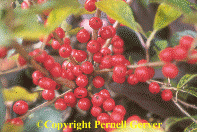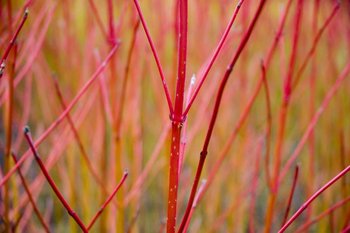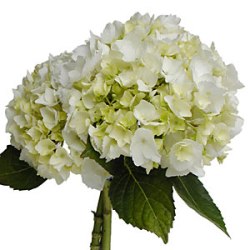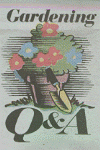|
Rhododendron and mountain laurel are two top choices for broad-leaved
evergreens. Rhododendron has glossy, deep-green leaves. Both catawba
rhododendron and "P.J.M." rhododendron can be used in
seasonal decorations. Catawba rhododendron has large leaves up to six
inches long. "P.J.M." rhododendron has smaller leaves, only
three inches long or so. Mountain laurel has light green, long
leaves. Other broad-leaved evergreen shrubs I like to use in holiday
decorations are Japanese holly and boxwood. Both have small, rounded,
dark green leaves. Boxwood is the perfect base for a boxwood tree.
 My
favorite way to add color to evergreen boughs is to insert stems of winterberry
and holly. Winterberry
is a deciduous type of holly. When its leaves drop in autumn, bare
branches lined with bright-red berries are revealed. The berries are
long lasting when cut. I use stems of winterberry
in my windowboxes to add color. Holly is a familiar broad-leaved
evergreen shrub with dark-green, prickly leaves and bright-red
berries. Other berried plants that can be used when decorating during
winter include blue-berried juniper and bayberry. My
favorite way to add color to evergreen boughs is to insert stems of winterberry
and holly. Winterberry
is a deciduous type of holly. When its leaves drop in autumn, bare
branches lined with bright-red berries are revealed. The berries are
long lasting when cut. I use stems of winterberry
in my windowboxes to add color. Holly is a familiar broad-leaved
evergreen shrub with dark-green, prickly leaves and bright-red
berries. Other berried plants that can be used when decorating during
winter include blue-berried juniper and bayberry.
 Colorful
and interesting branches add another dimension to seasonal
decorations. The most colorful branches to use are redtwig and yellow
twig dogwood. Redtwig dogwood has bright-red, slender stems. Yellow
twig dogwood has golden-yellow stems. Both provide bright color. For
interesting form, I like to use stems of Harry Lauder's walking
stick. The twisted and contorted stems seem to twist every which way
and provide a whimsical element to seasonal decorations. They are
good to use in centerpieces and small arrangements where their
interesting shape can be appreciated. Colorful
and interesting branches add another dimension to seasonal
decorations. The most colorful branches to use are redtwig and yellow
twig dogwood. Redtwig dogwood has bright-red, slender stems. Yellow
twig dogwood has golden-yellow stems. Both provide bright color. For
interesting form, I like to use stems of Harry Lauder's walking
stick. The twisted and contorted stems seem to twist every which way
and provide a whimsical element to seasonal decorations. They are
good to use in centerpieces and small arrangements where their
interesting shape can be appreciated.
 The
garden is a great source of seed heads and dried flowers this time
of year. To make sure I have a good supply of seed heads and dried
flowers this time of year, I wait to cut down any dead plants until
after I've finished with my seasonal decorations. Take a walk around
the garden toward the end of the season and look at plants with
decorating in mind. What at first appears to be a dead plant may
actually turn out to be an interesting accent in a holiday
decoration. Some of my favorite seed heads and dried flowers include astilbe,
ornamental grasses, clematis,
hydrangea, and chives. Siberian iris
seed heads turn deep brown and make nice accents. They can also be
spray painted gold for a gilded effect. The
garden is a great source of seed heads and dried flowers this time
of year. To make sure I have a good supply of seed heads and dried
flowers this time of year, I wait to cut down any dead plants until
after I've finished with my seasonal decorations. Take a walk around
the garden toward the end of the season and look at plants with
decorating in mind. What at first appears to be a dead plant may
actually turn out to be an interesting accent in a holiday
decoration. Some of my favorite seed heads and dried flowers include astilbe,
ornamental grasses, clematis,
hydrangea, and chives. Siberian iris
seed heads turn deep brown and make nice accents. They can also be
spray painted gold for a gilded effect.
 Cones
and nuts are popular accents in wintertime decorations. Various
types of evergreens provide cones including hemlock, spruce, and
white pine. Hemlock cones are the smallest cones, usually under an
inch wide. White pine cones are long, slender cones. Because of their
varying sizes and shapes, an assortment of cones can be used in all
sorts of decorations. Acorns are abundant this time of year. They can
be used in their natural state or they can be spray painted gold or silver. Cones
and nuts are popular accents in wintertime decorations. Various
types of evergreens provide cones including hemlock, spruce, and
white pine. Hemlock cones are the smallest cones, usually under an
inch wide. White pine cones are long, slender cones. Because of their
varying sizes and shapes, an assortment of cones can be used in all
sorts of decorations. Acorns are abundant this time of year. They can
be used in their natural state or they can be spray painted gold or silver. |



 It's
that time of year again to dress up the home with holiday
decorations. The garden is a great source of natural materials that
can be used in all sorts of decorations this time of year. Wreaths,
centerpieces, roping, swags, kissing balls, boxwood trees,
mantlepiece decorations, and windowbox and outdoor planter
decorations are just some of the holiday decorations that can be made
from materials gathered from the garden. Evergreen boughs, colorful
berries, colorful branches, seed heads, dried flower heads, cones,
and nuts can all be gathered from the garden and used in a variety of
festive seasonal decorations.
It's
that time of year again to dress up the home with holiday
decorations. The garden is a great source of natural materials that
can be used in all sorts of decorations this time of year. Wreaths,
centerpieces, roping, swags, kissing balls, boxwood trees,
mantlepiece decorations, and windowbox and outdoor planter
decorations are just some of the holiday decorations that can be made
from materials gathered from the garden. Evergreen boughs, colorful
berries, colorful branches, seed heads, dried flower heads, cones,
and nuts can all be gathered from the garden and used in a variety of
festive seasonal decorations. White
pine is one of my favorite needled evergreens to use as a background
material. The stems are slender and tend to bend gracefully when used
in windowboxes and other planters. The needles are soft and long.
Spruce and fir have shorter, more rigid needles on stiff stems. Blue
spruce has attractive blue-green needles that provide a colorful
contrast to the other evergreens.
White
pine is one of my favorite needled evergreens to use as a background
material. The stems are slender and tend to bend gracefully when used
in windowboxes and other planters. The needles are soft and long.
Spruce and fir have shorter, more rigid needles on stiff stems. Blue
spruce has attractive blue-green needles that provide a colorful
contrast to the other evergreens. Colorful
and interesting branches add another dimension to seasonal
decorations. The most colorful branches to use are redtwig and yellow
twig dogwood. Redtwig dogwood has bright-red, slender stems. Yellow
twig dogwood has golden-yellow stems. Both provide bright color. For
interesting form, I like to use stems of Harry Lauder's walking
stick. The twisted and contorted stems seem to twist every which way
and provide a whimsical element to seasonal decorations. They are
good to use in centerpieces and small arrangements where their
interesting shape can be appreciated.
Colorful
and interesting branches add another dimension to seasonal
decorations. The most colorful branches to use are redtwig and yellow
twig dogwood. Redtwig dogwood has bright-red, slender stems. Yellow
twig dogwood has golden-yellow stems. Both provide bright color. For
interesting form, I like to use stems of Harry Lauder's walking
stick. The twisted and contorted stems seem to twist every which way
and provide a whimsical element to seasonal decorations. They are
good to use in centerpieces and small arrangements where their
interesting shape can be appreciated. The
garden is a great source of seed heads and dried flowers this time
of year. To make sure I have a good supply of seed heads and dried
flowers this time of year, I wait to cut down any dead plants until
after I've finished with my seasonal decorations. Take a walk around
the garden toward the end of the season and look at plants with
decorating in mind. What at first appears to be a dead plant may
actually turn out to be an interesting accent in a holiday
decoration. Some of my favorite seed heads and dried flowers include
The
garden is a great source of seed heads and dried flowers this time
of year. To make sure I have a good supply of seed heads and dried
flowers this time of year, I wait to cut down any dead plants until
after I've finished with my seasonal decorations. Take a walk around
the garden toward the end of the season and look at plants with
decorating in mind. What at first appears to be a dead plant may
actually turn out to be an interesting accent in a holiday
decoration. Some of my favorite seed heads and dried flowers include  Cones
and nuts are popular accents in wintertime decorations. Various
types of evergreens provide cones including hemlock, spruce, and
white pine. Hemlock cones are the smallest cones, usually under an
inch wide. White pine cones are long, slender cones. Because of their
varying sizes and shapes, an assortment of cones can be used in all
sorts of decorations. Acorns are abundant this time of year. They can
be used in their natural state or they can be spray painted gold or silver.
Cones
and nuts are popular accents in wintertime decorations. Various
types of evergreens provide cones including hemlock, spruce, and
white pine. Hemlock cones are the smallest cones, usually under an
inch wide. White pine cones are long, slender cones. Because of their
varying sizes and shapes, an assortment of cones can be used in all
sorts of decorations. Acorns are abundant this time of year. They can
be used in their natural state or they can be spray painted gold or silver. by
Pernell Gerver
by
Pernell Gerver